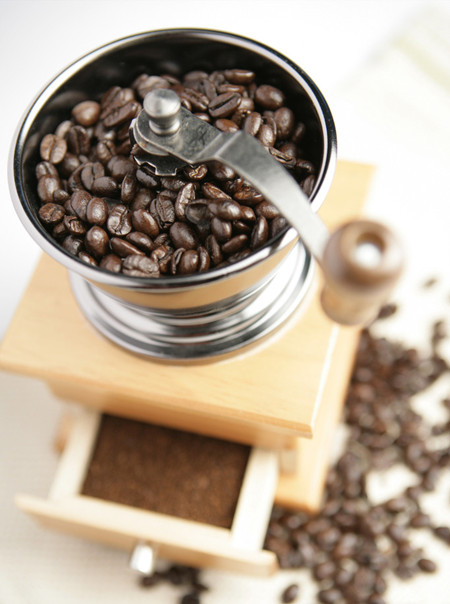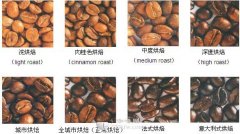Coffee tasting knowledge
Very often, you will hear many coffee lovers who don't know anything, so they can go to the store and shout, "Boss, do you have Kopi Luwak?" It's Kopi Luwak I drink every day. " There are also some coffee lovers with deep expectations for their own coffee. It is trumpeted that Yunnan coffee is comparable to Blue Mountain. These are quite arbitrary and rude, and the interpretation of the coffee world from this point of view is a kind of harm and ignorance.

First of all, from the perspective of daily production. We define the quality of a cup of coffee, we must have two basic factors, first, the origin, and second, the freshness of coffee roasting. The two are out of balance, and neither of them can extract high-quality coffee liquid. As a result, the feeling of our taste buds is also distorted!
High-quality origin, in the eyes of all coffee lovers, is almost sacred and irreplaceable, which mainly lies in the unique geographical relationship, natural environment, and excellent planting varieties. Like the well-known places we are familiar with, every noun of origin makes us so infatuated and crazy. Ethiopia and Yemen produce high-quality mocha coffee, of which Ethiopia's Mocha-Harald, Simon, and Yega Sheffield are the most famous. Moka-Matali produced in Yemen is even rarer. Kenya is a country full of legends. The mountains of Kenya and the Rift Valley of East Africa run through the whole territory, creating the legend of Kenyan coffee. Kenya has a mellow taste, lively and calm texture, and can be called the "uncrowned king" in the coffee industry, and is deeply loved by Germans. Germany's Tchibo buys a lot of Kenyan coffee.
Almost the whole of Latin America is a paradise for high-quality coffee, of which Colombian coffee is the most representative, and Arabica coffee is the largest exporter, with high quality and very friendly prices. Colombian coffee has a bitter balance, clear and clean taste, mellow thickness and bright taste, which can be regarded as a family demeanor. Jamaica, Cuba, Panama, Costa Rica, Guatemala and El Salvador all produce many famous products.
Indonesia is the best coffee producer in Asia, Sumatra is famous for producing high-quality Mantenin coffee, Robbosa beans in Java have a unique flavor, and the Toraga region of Sulawesi also abounds in high-quality coffee. Indonesian coffee is strong in texture, outstanding in bitterness, excellent in aroma and mellow.
The above are the most extensive definition of origin. Generally speaking, East African coffee is sour, mellow, supple and delicate. It doesn't taste bitter. Among them, Ethiopia, Kenya and Tanzania are represented. ]
Latin American coffee tends to have a balanced taste, moderate acidity and bitterness, high aroma and high overall quality. Balance is a key factor in quality coffee.
On the other hand, the coffee in Asia is bitter, weak in acidity and uneven in quality. the classification of coffee in Asia is not as advanced as that in Latin America, and there is even a big gap between Asian coffee and East African countries.
The above and other easy-to-understand definitions of origin only explain to junior enthusiasts that respect for the definition of origin is not a superstition but a basic element of appreciation. Based on the national conditions, since ancient times, too many coffee manufacturers have used cheap coffee raw materials to impersonate imported coffee of origin, which leads to more misinformation, and in the end, the real high-quality coffee of origin is rejected by the country, and inferior, single coffee is very popular, which is undoubtedly a chronic poison to the whole industry. Without good primary materials, it is impossible for a great barista to make a good product.
Of course, the purpose of writing this article is not to teach people to have a narrow and paranoid understanding of the coffee of origin, but to hope that coffee lovers can maintain a peaceful state of mind and understand the origin of all kinds of coffee, instead of being submissive and elegant. follow the trend of consumption, according to their own taste habits, to choose their favorite coffee.
Important Notice :
前街咖啡 FrontStreet Coffee has moved to new addredd:
FrontStreet Coffee Address: 315,Donghua East Road,GuangZhou
Tel:020 38364473
- Prev

Coffee brewing process
The basic conditions required to make a good cup of coffee: the amount of coffee roasting method coffee powder thickness water type and temperature coffee equipment how much coffee powder to make a cup of coffee is more appropriate?
- Next

Knowledge of coffee bean roasting
Coffee bean roasting purpose: 1: aroma 2: increase the complexity of coffee 3: to obtain color 4: to form the unique flavor of coffee and other functions.
Related
- What is the meaning of lactic acid fermentation with coffee bean treatment?
- How to judge the state of foam by sound?
- How does the latte pull out the unicorn pattern? Come to get for a little trick to improve the flower pull!
- Will flower pulling affect the taste of the latte?
- Do you know the history of coffee?
- The difference between honey treatment and sun washing what is raisin honey treatment?
- What kind of milk can a novice use to make coffee foam to keep the foam longer? The correct method and skills of milking tutorial sharing
- Why do washed coffee beans taste sour? Flavor characteristics of washed Coffee
- Introduction to the skill of how to practice the size and height of water injection around the circle of hand-brewed coffee
- How do beginners practice coffee flower drawing from scratch?

